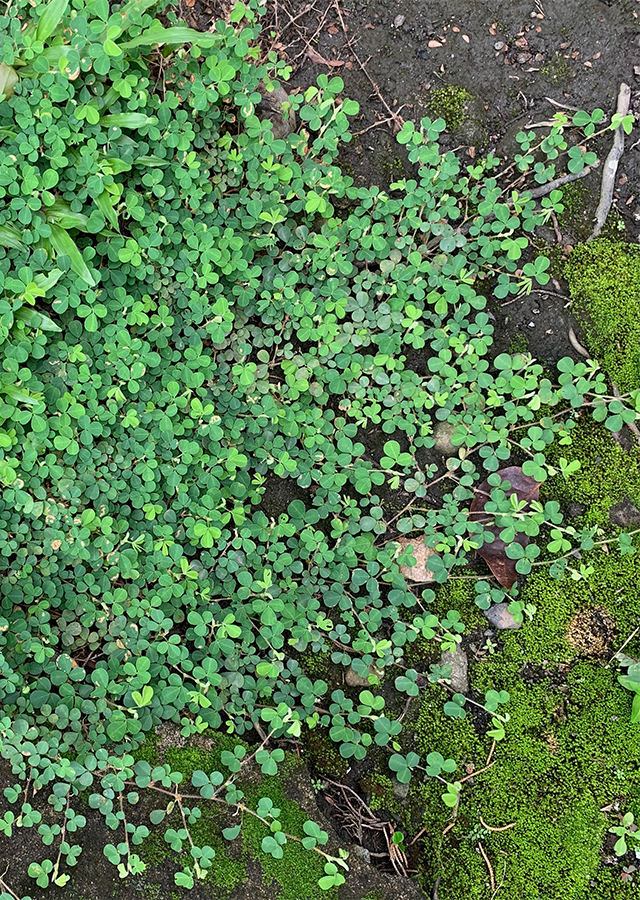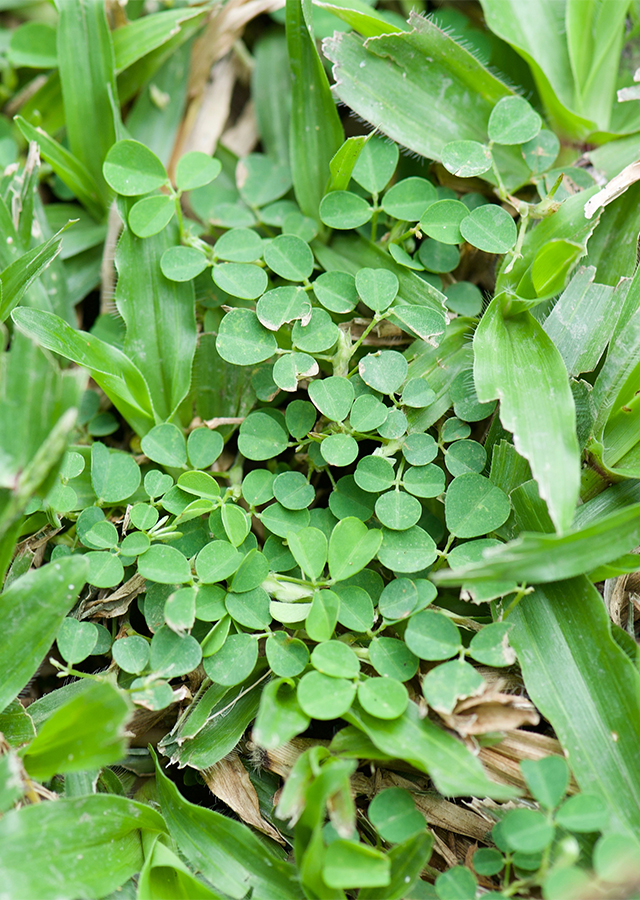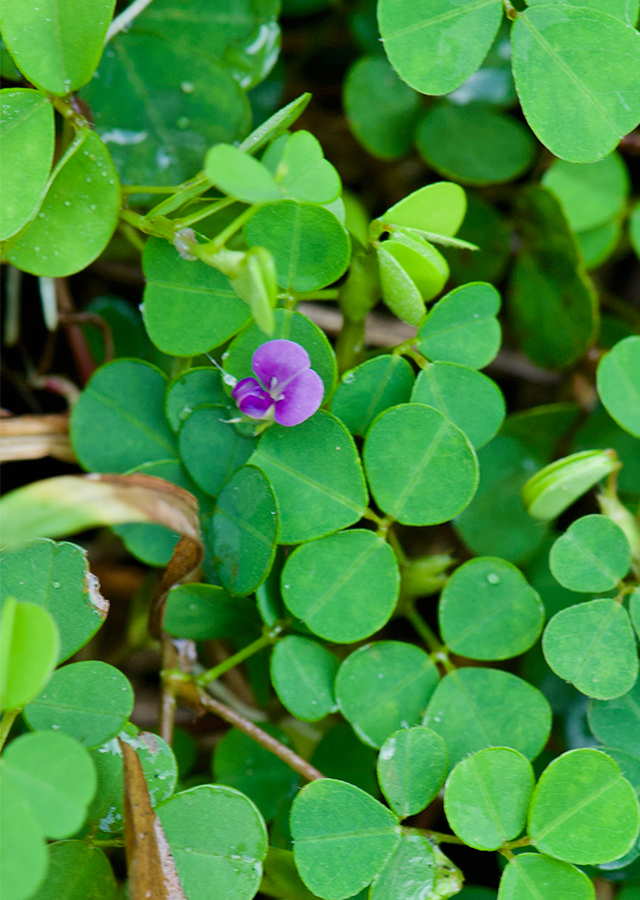Three-flower Ticktrefoil
Grona triflora (L.) H.Ohashi & K.Ohashi.
Fabaceae
Location in our garden
Principal



Synonym
Aeschynomene triflora (L.) Poir
Desmodium albiflorum Cordem.
Desmodium triflorum (L.) DC.
Habitus
Herbaceous. An annual to perennial, producing stems 8-50 cm long.
Part Used
Leaves
Roots
The Whole Plant
Growing Requirements
Full Sunshine
Need Shade
Habitat
Roadside
Grassland
Overview
It is well known as Desmodium triflorum. Desmodium comes from the Greek word desmos which means a bond or chain, a reference to its jointed fruit, that sticky green loment to the above right. Triflorum refers to its blossom with three petals, some say refers to three blossoms per stem. Native to Old World tropics and subtropics. Pantropical; a common species throughout the Malesian region, Australia and the Pacific Islands. It is usually found in heavily grazed or closely cut areas.
Vernacular Names
Daun mules (Indonesian), Kaliskis-dalag (Philippines), Ya-klethoi (Thailand), Hàn the (Vietnamese), San dian jin (Chinese), Hierba cuartillo (Spanish), Konikoni (Fijian).
Agroecology
A plant of the moist, lowland tropics, where it is found at elevations up to 1,000 m. It grows best in areas where annual daytime temperatures are within the range 18-28 °C, but can tolerate 14-32 °C. It can be killed by temperatures of -1 °C or lower. Prefers a mean annual rainfall in the range 1,500-4,000 mm, but tolerates 1,200-5,000 mm. Tolerant of light levels from deep shade to full sun. Succeeds in most well-drained soils of low to moderate fertility.
Morphology
- Roots - taproot, white or brown.
- Stems - rounded, solid, glabrous. Stipules present - triangular, glabrous or hairy.
- Leaves - compound, trifoliolate, obovate, alternate spiral, stalked, less than 2 cm long/ wide, glabrous on both sides.
- Flowers - bisexual, grouped together in an axillary, few-flowered, stalked head, petals 5, red, blue or purple.
- Fruits - an articulated pod.
Cultivation
- Seed - best sown as soon as it is ripe.
- Cuttings of half-ripe wood with a heel.
- Root cuttings.
Chemical Constituents
- Flavonoid, alkoloid, ethanolic, indole-3-acetic acid, trigonelline, choline, hypaphorine, saponin, terpenoid, antocyanins, tyrumine, steroid, phenolic, amino acid.
Traditional Medicinal Uses
- The plant is antipyretic, antiseptic, expectorant.
- The roots are reputedly carminative, tonic and diuretic, and used in bilious complaints.
- The main actions include anti-spasmodic, sympathomimetic, central nervous system stimulation, curare-mimetic activity and diuretic.
- In Indonesia, Malaysia, the Philippines, Thailand, China, India and Sri Lanka, a decoction of D. triflorum is commonly used to treat diarrhoea and dysentery, as a mouthwash and as an expectorant. The crushed plant or a poultice of the leaves is externally applied on wounds, ulcers, and for skin problems in general, apparently for its antiseptic properties. It is also used as a forage, as a green manure and ground cover.
- In Thailand, the whole plant is used as an antipyretic and to quench thurst.
- The leaves are galactagogue and ground with cow's milk, they are given daily in the morning., and also given to children to treat diarrhea due to indigestion and in convulsions.
- Expressed juice from a well macerated plant is applied to abscesses and wounds that do not heal readily.
Part Used
Reference Sources
- Pengelly, BC. (1992). Desmodium triflorum (L.) DC In: L. 't Mannetje and R.M. Jones (Editor): Plant Resources of South-East Asia No. 4. Forages. Pudoc-DLO, Wageningen, the Netherlands. pp 116 - 116.
- Setyowati-Indarto, N. & Brink, M. (1999). Desmodium triflorum (L.) DC. In: de Padua, L.S. Bunyapraphatsara, N. and Lemmens, R.H.M.J. (Editors): Plant Resources of South-East Asia No 12(1). Medicinal and poisonous plants 1. Backhuys Publishers, Leiden, the Netherlands. pp 249 - 249.

